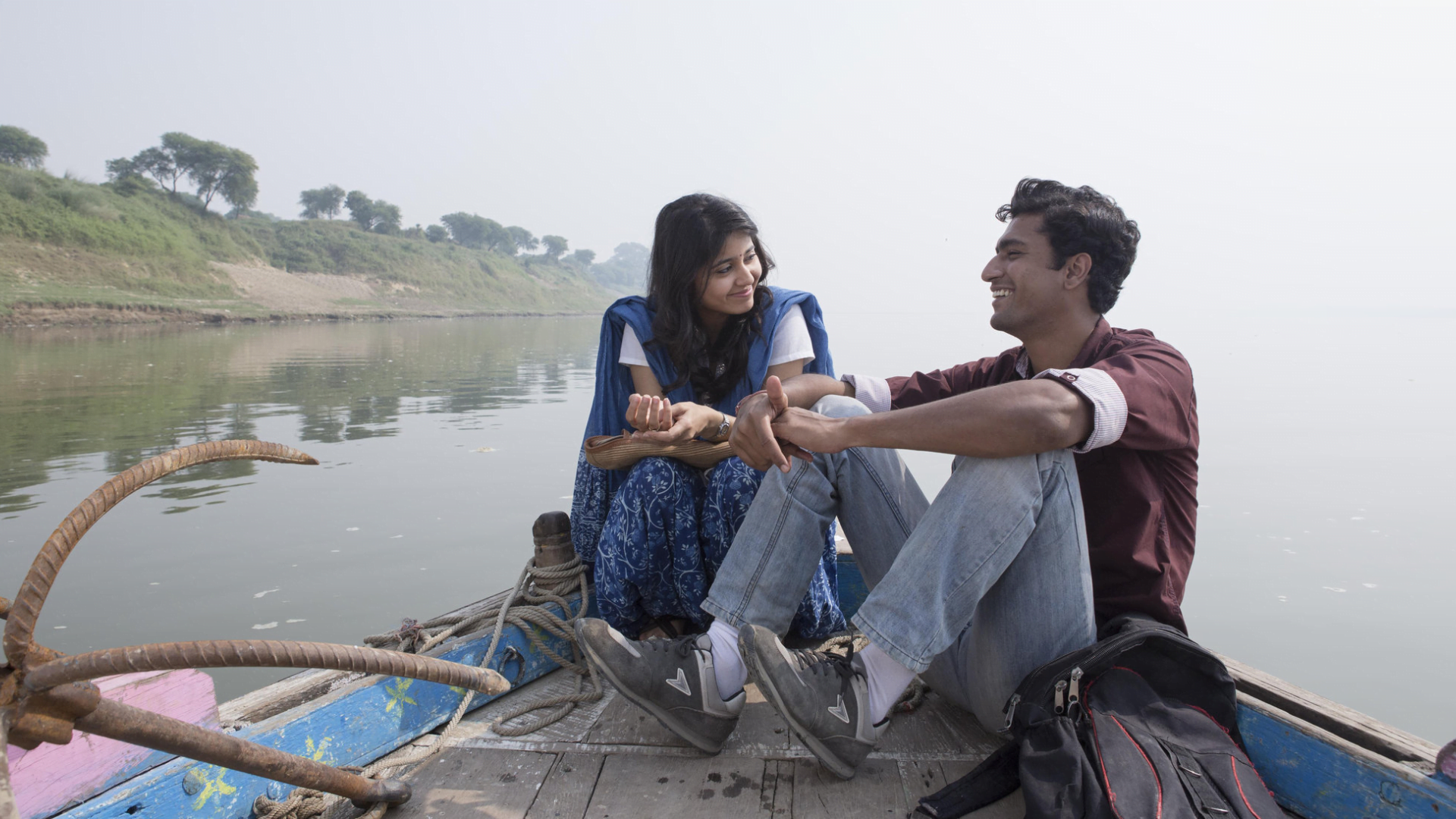After having Poha and Omelette, a strange delicacy for breakfast, I rushed straight to Prof. K Hariharan’s class at FTII. The enthusiasm and energy he brought to the class were overwhelming with his profound wisdom on films. I vividly remember his suggestion to watch films repeatedly, and perhaps he said 10 to 20 times or more I am unsure about it. Later, I noticed Vetrimaaran reiterating in one of his interviews and the same with Martin Scorsese. I was relentlessly wondering which film that would be. Masaan kept coming to me since I follow Varun’s work.
And then the pandemic hit, and I was bedridden for some time. I healed moreover, the ignition to understand visual storytelling and cinema, in particular, reached its pinnacle and Masaan seemed to be a gateway.
I always wanted to write about Neeraj and his cinematic universe, undoubtedly because his work strives against the dominant narrative of victimhood and strips naked social and psychological vulnerabilities of a human and thereby bestowing the incredibility of humanness. The protagonists of his cinematic universe have always inverted the popular gaze in, be it Masaan, Juice and the recent short Geeli Puchi in the Netflix anthology Ajeeb Daastaans.
Masaan’s dual narrative was designed and executed so intrinsically that Deepak’s and Devi’s journey to overcome small town morality, the loss, the bereavement, and the healing, hooks you to the stories till the end. Parallel plots are usually linked by a common character, event, or theme, and Masaan is no exception.
This article sounds like an impatient tribute and Masaan’s seventh anniversary seems to be the perfect occasion. The film opens with a sequence of Devi’s naïve experiment that turns out to be a nightmare of her life and fades with the title (Masaan) in the middle of the right side suffice the opening sequence and gives us a sneak peek into what lies ahead; an imbalance, of a society, a town or of life or people or everything in between.
Masaan’s dual narrative was designed and executed so intrinsically that Deepak’s and Devi’s journey to overcome small town morality, the loss, the bereavement, and the healing, hooks you to the stories till the end. Parallel plots are usually linked by a common character, event, or theme, and Masaan is no exception.
The first convergence of the plot points exemplifies through Devi’s unapologetic confrontation with her father, Doctor (Deepak’s father) and Sikandar; how Doctor desperately wants Deepak to leave the place and Jhonta with Pathak. This is the first time that protagonists express their discontent with small-town morality. The common thread of confrontation among these characters elevates the visual experience.
Masaan’s dual narrative was designed and executed so intrinsically that Deepak’s and Devi’s journey to overcome small town morality, the loss, the bereavement, and the healing, hooks you to the stories till the end. Parallel plots are usually linked by a common character, event, or theme, and Masaan is no exception.
The storyline of Devi and Deepak collides at the loss of their loved ones, which seems that of Ameros Perros by Alejandro G Iñárritu loosely deals with loss and death. Devi’s plotline in the script and final cut are fascinating. Deepak’s journey is not docile but sensitively crafted to subvert the popular imagination. Deepak’s healing journey was cut short in a montage of Man Kasturi re. In the script, however, his journey is an enthralling experience.
Devi’s confrontation with Pathak about the incident and she opens her bag to see Piyush’s gift are static mid-shots. The perceptive crafting forces viewers to look at Devi’s precarity more objectively. Devi visiting Piyush’s house in an extreme long shot reinforces the objectivity of Devi’s character and the storyline. Few sequences are static and relatively long shots; Devi and Piyush first kiss, and the police come to Devi’s house to settle the case until he informs her about the death of Piyush and when Pathak hits Devi.
The shots neutralise the power dynamics among the characters except the Misharaji’s act to intimidate for bribery. The cinematic order of the camera imposes a subtle and natural ambience to perceive them as being in their state of being. Neeraj’s innovative vision of Devi’s storyline lies in the compassionate crafting of the sequences. The composition seems to be the director’s tribute to Béla Tarr.
The shots neutralise the power dynamics among the characters except the Misharaji’s act to intimidate for bribery. The cinematic order of the camera imposes a subtle and natural ambience to perceive them as being in their state of being. Neeraj’s innovative vision of Devi’s storyline lies in the compassionate crafting of the sequences. The composition seems to be the director’s tribute to Béla Tarr.
Varun’s mantra for a good story lies in authenticity and the story being true to its space and time. Neeraj and Varun achieve authenticity in stories and characters through extensive research. Masaan reflects that the earnestness in research about the settings and the people add value to the story and characters.
Also read: Raw And Relatable: 5 Female Characters Who Transformed Cinema
Deepak’s mother asking to bring the light from the crematorium and the Doctor’s discussion with Pandey and Laala about the Pari (Bonus-day) are some of the vibrant details that seem to transpire from their extensive research. Their in-depth research breathes life into the setting rendering Varanasi and ghaat in particular in the film as the characters texturising their protagonists with peculiar warmth, sensibility and groundedness. It seems that the anthropology students interviewing Pathak about the ghaat are Neeraj and Varun.
Also read: Film Review: Juice, A Cold, Sour Look At Male Entitlement In Our Houses
The author is a writer and researcher. You can reach the author for comment and/or clarification at murabiyadivyesh@gmail.com.
Featured image source: The New York Times
About the author(s)
Divyesh Murabia is a writer and researcher. You can reach the author for comment and/or clarification at murabiyadivyesh@gmail.com.




